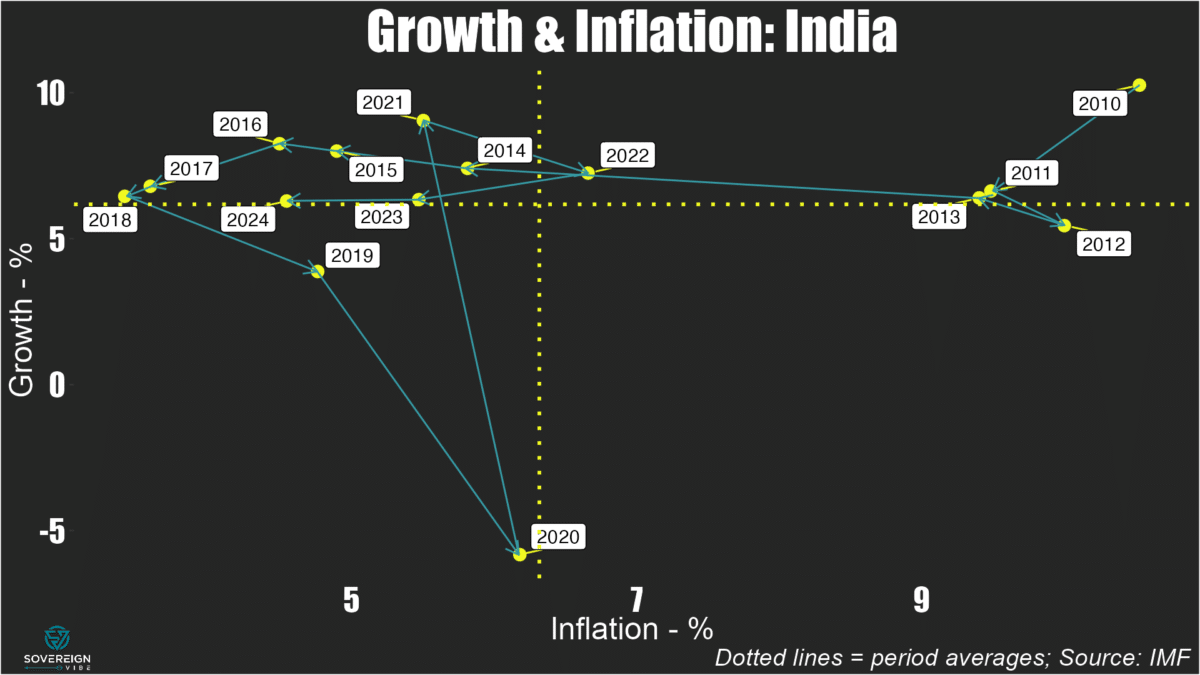India’s economy is in great shape as it heads to the polls… but something’s off.
With India’s general elections getting under way on Friday, much of the focus this week will be on the world’s most populous country and largest democracy. So here are some charts to help you look beyond the headlines and arm yourselves with some facts.
Modi’s mojo
South Asia is the fastest-growing of all emerging market and developing economy regions, largely thanks to robust growth in India on the back of strong public investment and dynamic services.
Growth rebounded strongly thanks to a post-2020 base effect, breaching 9% in 2021 before moderating to ~7+% in 2022 and ~6+% in 2023 and 2024. These are excellent numbers, particularly given that inflation is gradually declining towards the Reserve Bank of India’s 4% target. All of this situates growth and inflation above and below their averages since 2010, respectively (see chart below). So it is little wonder that Narendra Modi’s BJP is so strongly positioned as India heads to the polls.
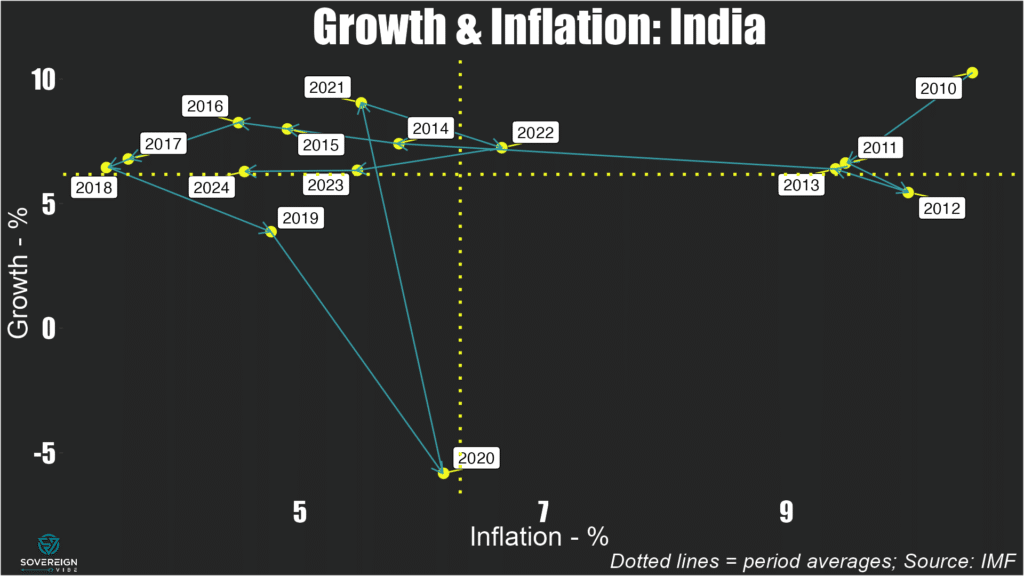
A global perspective
Zooming out, India’s population is still heavily under-represented in the global economy. Its 1.4bn+ souls account for nearly 18% of the world’s total, while its share of global GDP is only a bit above 3%.
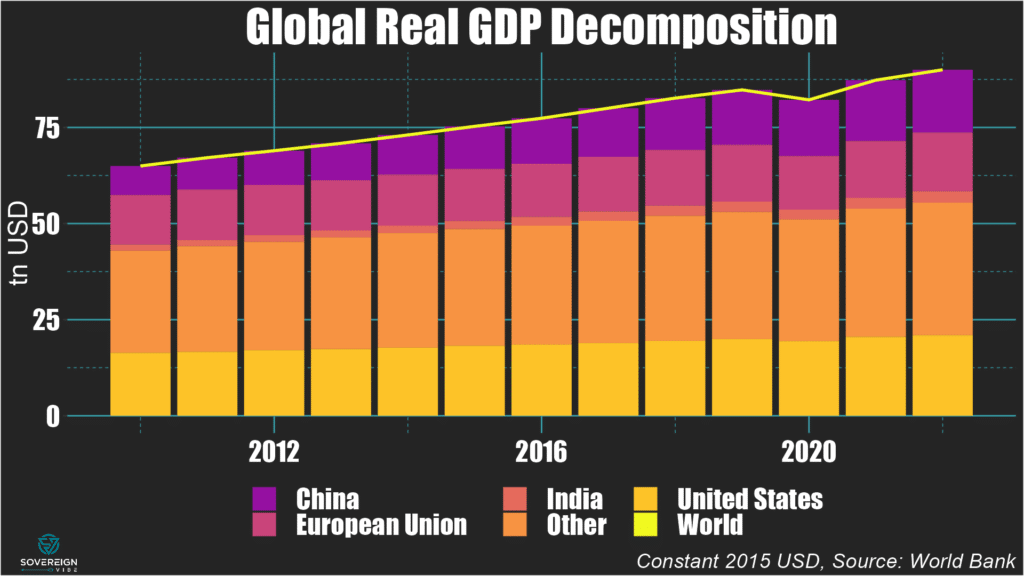
Yet the country is certainly punching above its weight when it comes to contributions to global GDP growth, as it is contributing 6% of global growth (see chart below) from its 3% slice. This ratio is likely to evolve favorably for India in coming years as China’s growth continues to slow.
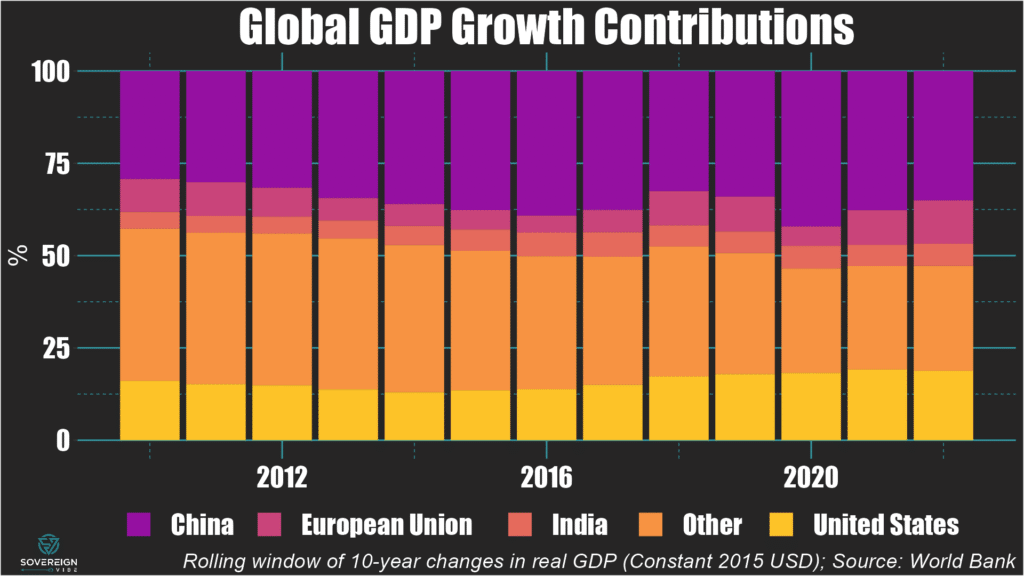
Demographics
The pyramid below has an ideal shape for economic growth in India over the next decades. A huge cohort of young people – the world’s largest – is moving into the workforce, even as birth rates moderated over the past couple of decades. This will decrease the dependency ratios of the young and old on people of working age and likely contribute strongly to growth, savings, and development in the years ahead.
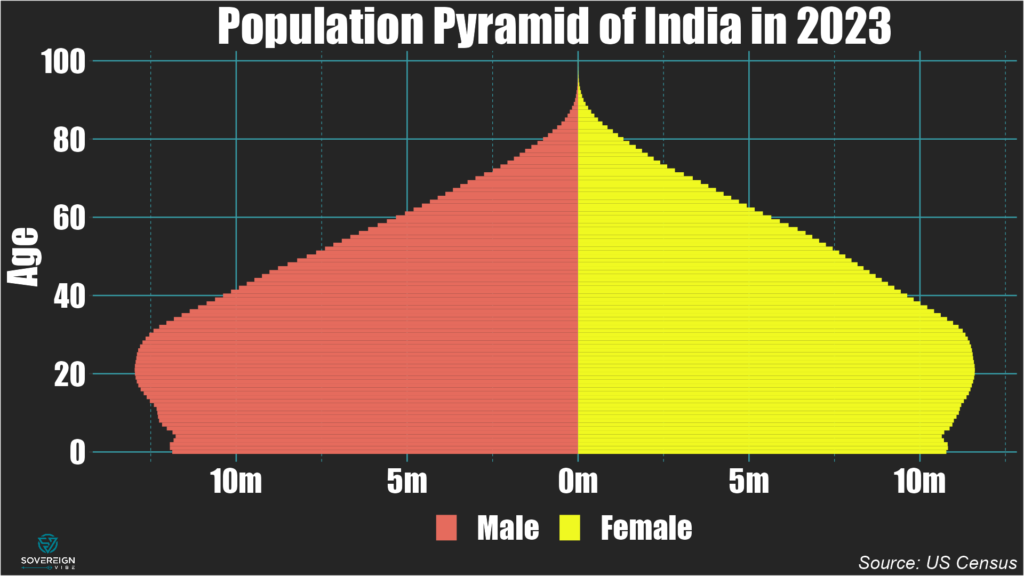
However, it is concerning to see such a large imbalance between the number of men and women in India, with men far outnumbering women. The gap is as wide as 2 million for each age for people in their 20s and 30s. It is estimated that there are around 106.5 men for every 100 women in the country. This is the type of ratio that could potentially lead to instability and violence under certain conditions, though hopefully India’s robust output growth can continue to be somewhat of a palliative to that.

